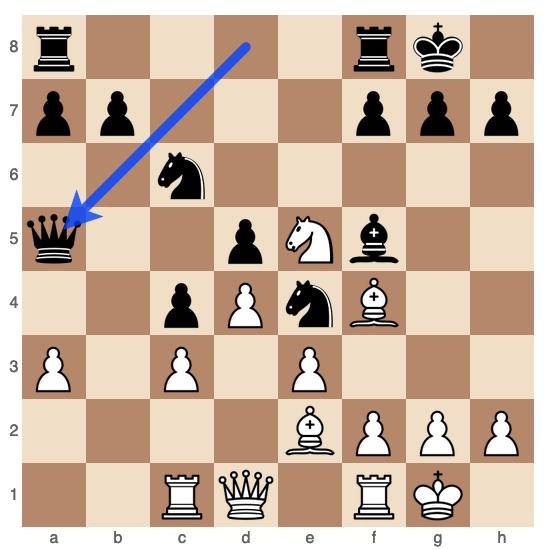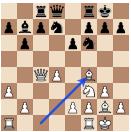In this final round of the Titled Tuesday tournament, Guillermo Baches (Chessllermo) faces Aakaash Meduri in a tense and dynamic struggle arising from the King’s Indian Defense. Baches, with the white pieces, navigates the complexities of this double-edged opening with precision and tactical acumen, culminating in a decisive victory that highlights his superior understanding of both strategy and tactics.
The Opening
The game begins with the King’s Indian Defense (1. d4 Nf6 2. c4 g6 3. Nc3 Bg7 4. e4 d6), where Meduri opts for a hypermodern approach, allowing Baches to establish a strong pawn center. Baches continues with 5. f3, preparing to develop his pieces and possibly control the e4 and d5 squares more firmly.
By move 7. Qd2, Baches prepares for a typical King’s Indian setup, with the idea of castling queenside and launching a pawn storm on the kingside. Meduri responds with 7…e5, a thematic move aiming to challenge White’s center and prepare for counterplay on the queenside.
The Middlegame
The middlegame starts to take shape after 8. d5, where Baches closes the center, setting the stage for a typical King’s Indian structure. Meduri responds with 8…a5, aiming to gain space and prepare for b5, but Baches is ready with 9. Nh3, a move that not only develops the knight but also prepares to launch an attack on the kingside.
The game intensifies after 11. g4, where Baches begins his kingside assault. Meduri counters with 11…f5, trying to open lines and create counterplay. However, Baches seizes the initiative with 12. gxf5 and 13. Rg1, rapidly mobilizing his pieces for an all-out attack. The move 14. Bxc5 is particularly strong, as it removes a key defender and allows White’s pieces to dominate the kingside.
The turning point occurs after 17. Qg2, where Baches centralizes his queen, threatening to open the g-file and create devastating threats against Black’s king. Meduri’s attempt to exchange queens with 18…Qe7 is met with a tactical sequence that favors White. Baches correctly assesses that the endgame is advantageous for him and proceeds to trade queens with 19. Qg5 Qxg5 20. Rxg5.
The Endgame
In the endgame, Baches holds a significant advantage due to his more active pieces and better pawn structure. By move 21. Nxf4, Baches captures a pawn and opens up the board, making it difficult for Meduri to find counterplay. The move 22. Nh5 is particularly powerful, positioning the knight on a strong square and preparing to push the d-pawn.
Meduri’s position deteriorates quickly after 23…Nxd1, as Baches sacrifices material to further activate his pieces. The decisive sequence starts with 24. Bc4, where Baches brings his bishop into the attack, and 25. Rxg7+ leads to a fatal infiltration by White’s rooks and knight. By move 30. Rh7+, Baches has completely outmaneuvered his opponent, forcing Meduri into a losing position.
The final blow comes with 33. Rh8+ Kxh8 34. Qxf8#, where Baches delivers checkmate with a beautifully coordinated attack, highlighting his tactical sharpness and strategic foresight.
Conclusion
This game is an excellent demonstration of how to play against the King’s Indian Defense, particularly in terms of launching a kingside attack and handling the complexities of a closed center. Baches’ precise calculation and aggressive play left Meduri with no chance to recover.
Key Lessons:
- In the King’s Indian Defense, a well-timed pawn storm on the kingside can lead to a devastating attack, especially when Black’s pieces are restricted.
- Tactical awareness is crucial in complex positions; even small inaccuracies can lead to a swift and decisive outcome.
- Transitioning to a favorable endgame often requires trading queens and maintaining active piece play, as demonstrated by Baches’ decision to exchange queens at the right moment.
“Chess is a game where the initiative is everything—once you have it, never let go.” Baches embodied this principle, maintaining the initiative from the middlegame through to the final, crushing checkmate.






